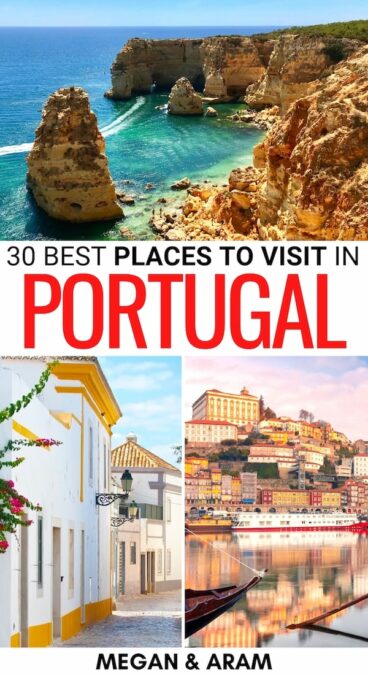Is Portugal on your Europe itinerary this year? These are some of the best places to visit in Portugal to consider adding to your bucket list!
While many of these places are cities and towns, you will also find islands, wine regions, and more!
Did we miss any of the best places in Portugal? Let us know in the comments!
Best Places to Visit in Portugal
1. Lagos
This historically authentic Portuguese city is located on the Western Algarve coastline.
With an abundant seafaring heritage and pristine beaches, Lagos is one of the most popular tourist destinations in Southern Portugal.
The city offers historical sights, exciting recreation, outstanding restaurants, and a vibrant nightlife. Your trip to Lagos should include visiting the historic quarter.
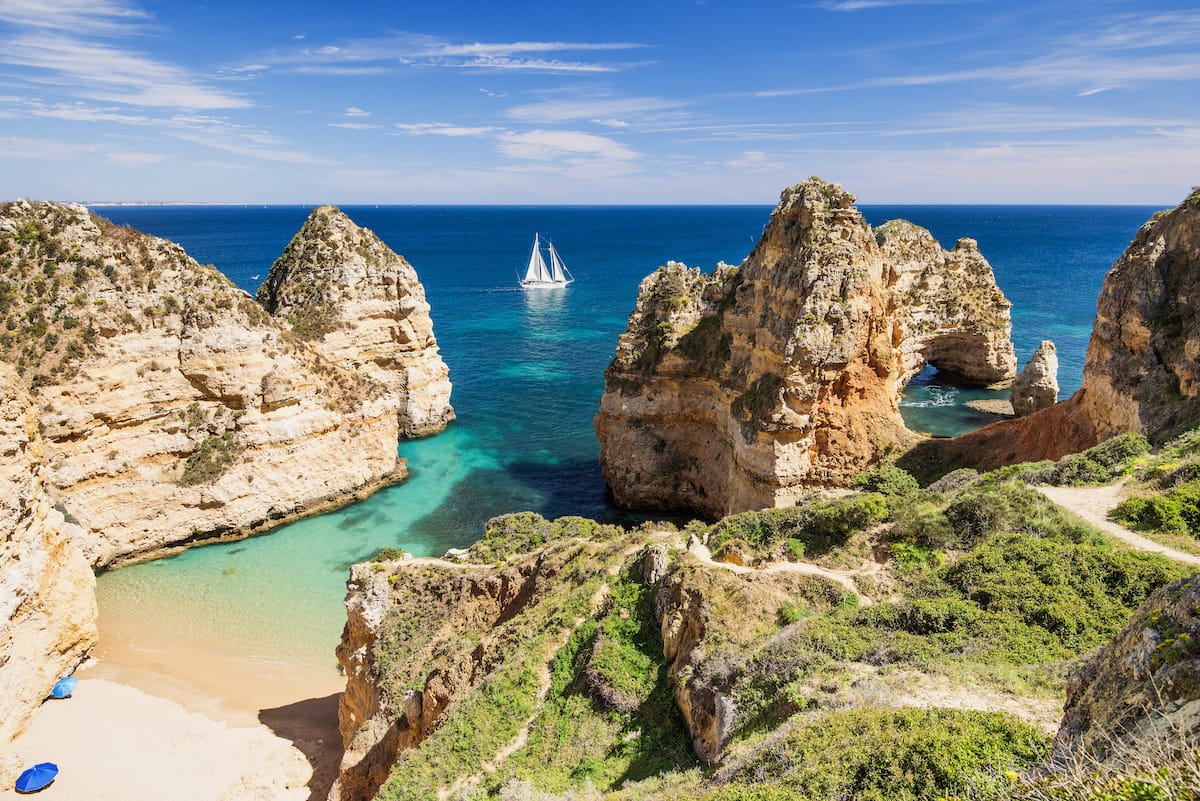
See the ancient city walls, the Forte da Bandeira, and the Igreja de Santo Antônio.
For a day on the beach, head to the Praia de Dona Ana Beach, nestled at the foot of golden cliffs and lapped by turquoise waters.
In addition, stop at Ponta da Piedade and admire unique limestone cliff formations, hidden grottos, sea arches, and perfectly balanced stacks.
2. Porto
Porto is a vibrant and energetic city with so much to offer. It boasts unique attractions, delicious cuisines, buzzing nightlife, and extensive history.
Explore the city’s historic center, including Se, Baixa, and Ribeira districts. See the Gothic Se Cathedral, the Igreja do Carmo, and the Livraria Lello bookshop.
Soak up an abundance of Portuguese charm in the Ribeira district, famous for its narrow cobbled streets and colorful houses.
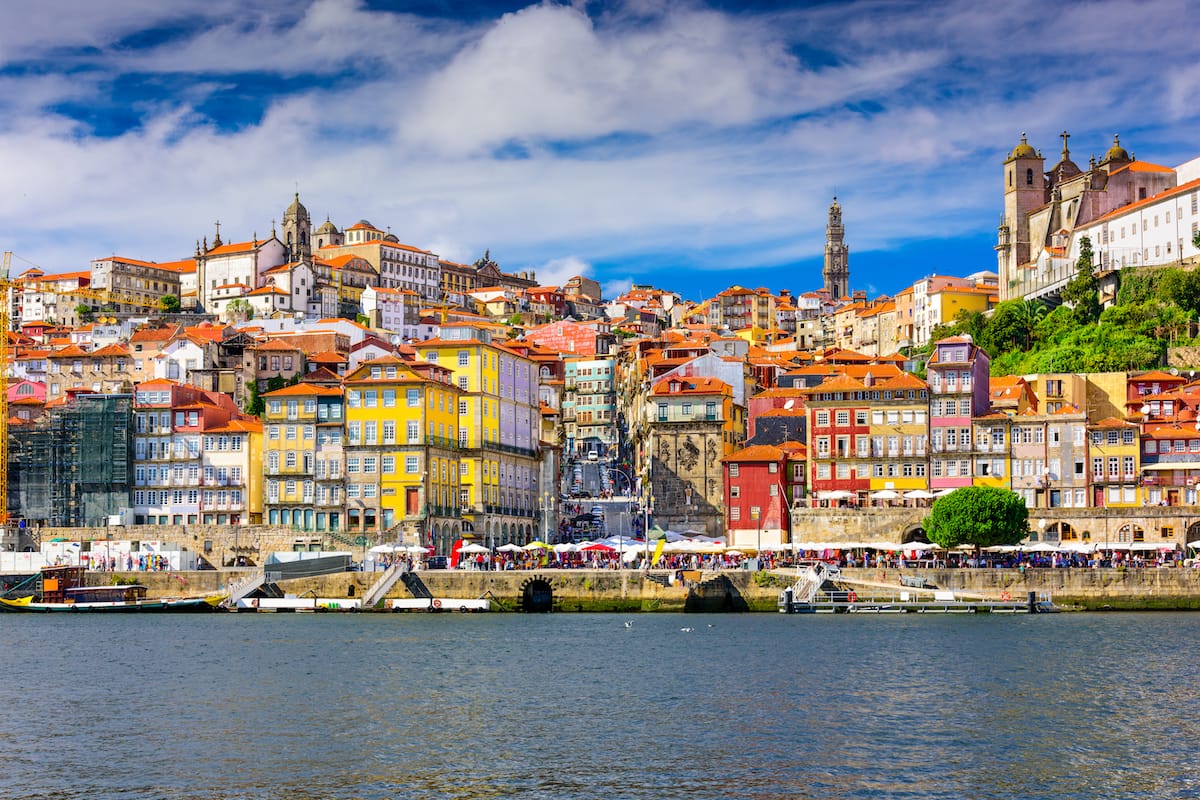
Visit Vila Nova de Gaia, where Porto’s wine cellars are located, and join a wine-tasting tour. Ride a cable car and embrace the area’s social atmosphere.
In the evening enjoy a relaxed ambiance at the peaceful Foz district, offering small beaches and trendy bars.
3. Madeira
Unique landscapes, subtropical climate, geographical position, and remarkable cultural heritage make Madeira one of the top destinations in the country.
The island of Madeira is a 741 km² oasis surrounded by forests, beaches, mountains, and towns.
Start exploring the island on the East Coast, packed with viewpoints, beaches, monuments, historical heritage, and delicacies.
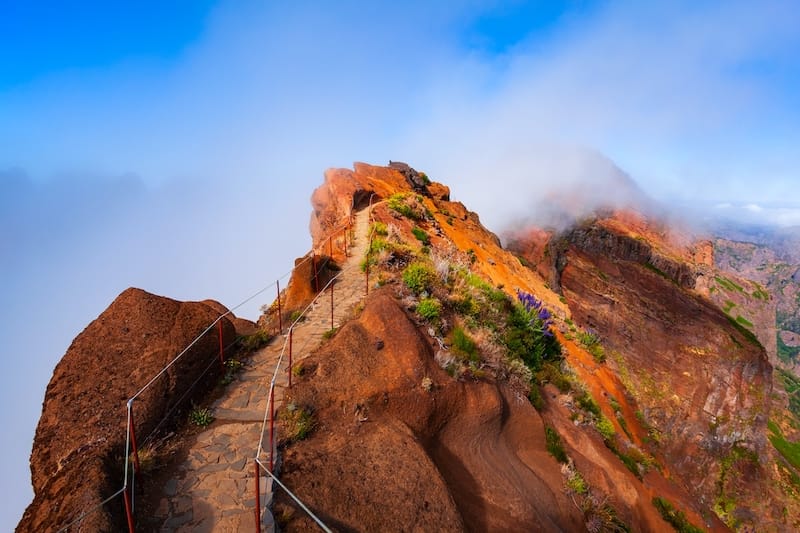
The North Coast boasts the most spectacular sceneries on the island, covering breathtaking views of cliffs, mountains, forests, and sea.
Relish tons of flavors, traditions, and natural landscapes on the South Coast.
The West Coast is a perfect destination for water sports enthusiasts, offering beaches, excellent bathing complexes, and countless sites of interest.
4. Lisbon
From monuments to beaches, the Portuguese capital has much to create unforgettable adventures.
Experience the historical and cultural atmosphere of Lisbon by visiting the iconic landmark Arco da Rua Augusta.
Discover the impressive designs on the ground, calçada portuguesa, featuring limestone cubes shaped and placed by skillful craftsmen.
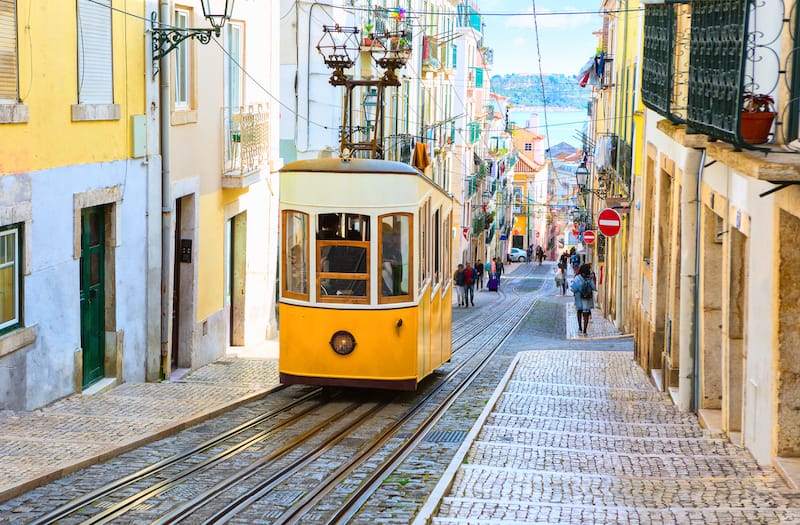
Admire Cape Roca, where the land ends and the sea begins. Explore the capital’s museums like the Abbey of Alcobaça, the Air Museum, and the Ajuda National Palace.
In addition, enjoy the sun and the sea at the endless seaside areas, including the Beaches of Arrábida and Sesimbra, the Beaches of Cascais, and the Beaches of Costa da Caparica.
5. Peneda Geres National Park
Peneda Geres National Park was established in 1971 as a part of the National Network of Protected Areas.
Encompassing an area of 70,000 hectares, the park spreads over five municipalities and covers the plateaus of Mourela and Castro Laboreiro.
This is a mountainous region with a rich geological history tracing back 400 million years.
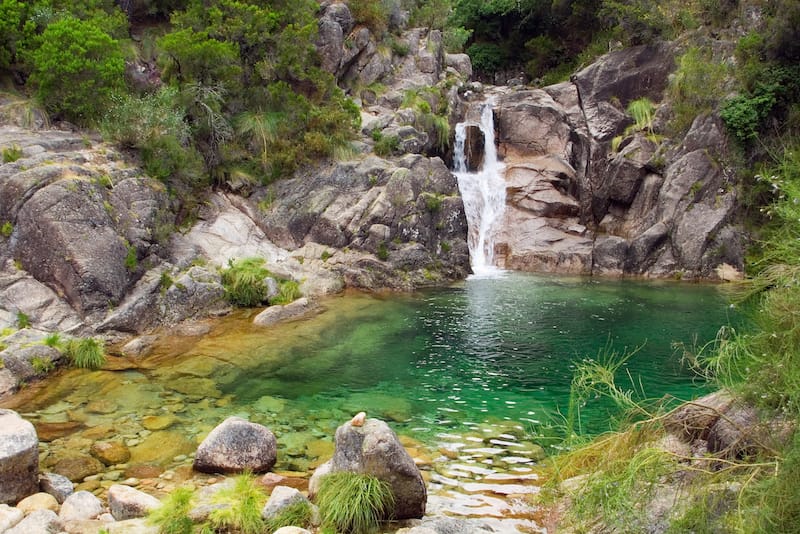
Due to the combination of the Mediterranean, Atlantic, and continental climates, the protected area boasts exceptional nature in terms of biodiversity and habitats.
The landscapes feature stacks, tors, granite boulders, countless valleys, streams, and various springs.
The park has been inhabited since the Neolithic age. Its intangible heritage is immense and still in evidence.
6. Albufeira
Welcome to the tourism capital of the Algarve region, offering a warm and sunny holiday on the long golden sand beaches.
One of the scenic coasts of the area is Falésia Beach, offering breathtaking views and the best resorts in the country.
Just four km from the center of Albufeira, you can find the most famous shore, São Rafael Beach, with its fantastic scenery of rock formations, grottos, and caves.
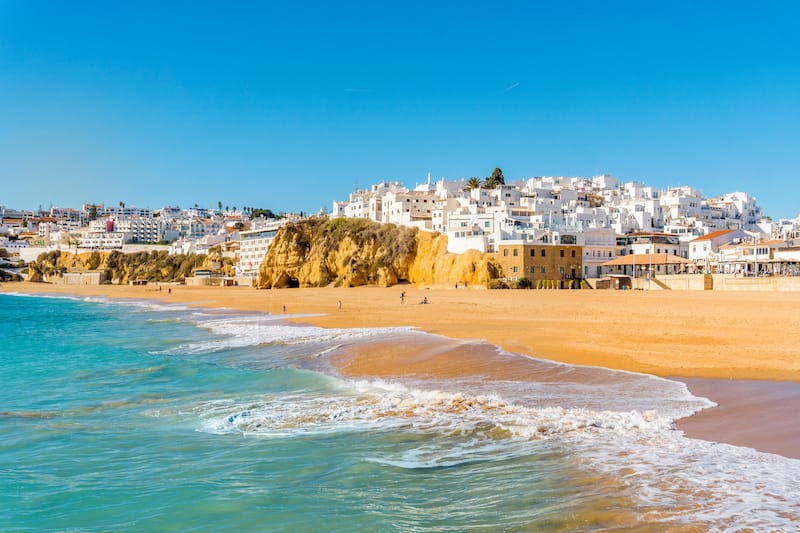
The Old Town is a mixture of 18th-century reconstructed buildings and modern structures with whitewashed churches, cafes, bars, and restaurants.
To embrace the best views of the town and its coast, head to Elevador do Peneco, a modern elevator and an observation platform located on the western end of Praia do Peneco.
7. Azores Islands
Listed among Europe’s top ten best islands, these nine naturally surprising islands are located right in the heart of the Atlantic.
Set in complete harmony with nature, the Azores will amaze you with unmatched experiences.
The islands’ abundant natural heritage with volcanic caves, botanical gardens, and nature parks alongside traditional villages and towns provide perfect nature tourism opportunities.
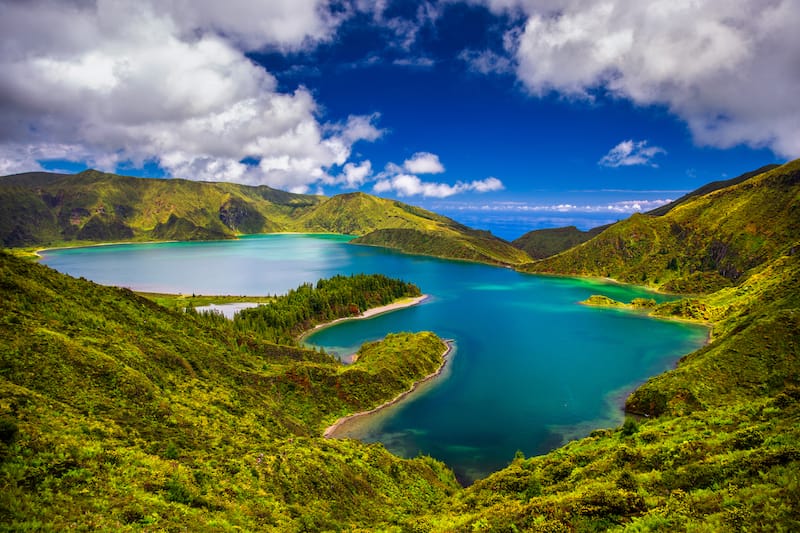
The Azores also play host to rich activities like diving, hiking, canoeing, geocaching, and golf courses with scenic views of the sea and mountains.
Travelers may join themed tourist routes, covering wines, spas, and volcanoes as well as plenty of trails set along fantastic natural landscapes.
8. Evora
Located in the heart of Alentejo, Evora is one of the favorite destinations in Portugal among locals and tourists.
This world heritage site is considered a museum city with a history originating from Roman times.
Explore the unique architecture of white houses, balconies, and tiles, taste local food and drinks, and have adventures in the ocean or on the plains.
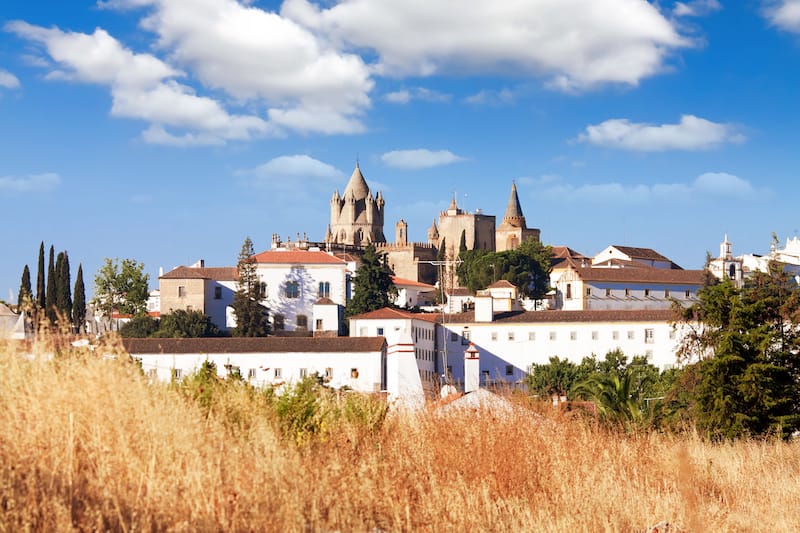
Some of the highlights to visit in Evora include the old wall, medieval buildings like churches, palaces, squares, convents, and the cathedral.
Stop at museums Evora Museum, Eugénio de Almeida Foundation, and the Evora Cathedral Sacred Art Museum.
Follow the prehistoric traces of the area at Anta Grande do Zambujeiro (dolmen) and Cromeleque dos Almendres.
9. Benagil Sea Caves
This small fishing village is set on the Algarve’s southern coast and has gained popularity due to an incredible sea cave.
The imposing natural formation has become one of the top destinations in the Algarve, thanks to travelers sharing their photos of the cave all across the internet.
The cave, called Algar de Benagil, is situated on the left side of the beach. Inside the cave, you can see the sky through an opening in the ceiling, and there’s a small lovely inner beach.
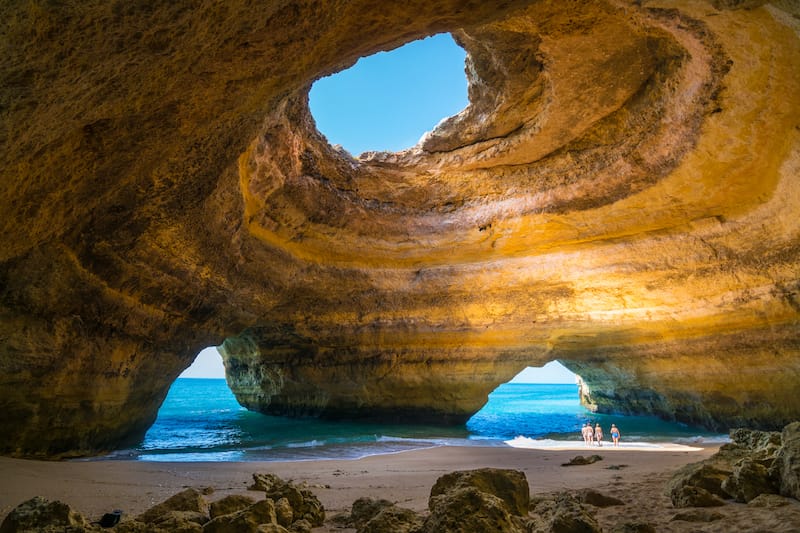
Due to its popularity, it has become easier to reach the cave, with an increased number of boat trips from Benagil and other areas.
Companies like Carvoeiro and Armação de Pêra, operating from local beaches, can take visitors to these spectacular rock formations.
10. Wineries in the Douro Valley
Douro is one of the most famous wine-producing places located in the heart of Portugal. Winemaking in the valley is an art combined with tradition and innovation.
Ancient stone wineries exist in harmony with modern facilities, shaping the unique winemaking process. With exceptional craftsmanship and abundant heritage, the area captivates wine enthusiasts and not only.
Generations of wine-makers transformed this picturesque region into terraced vineyards spread over rugged slopes.
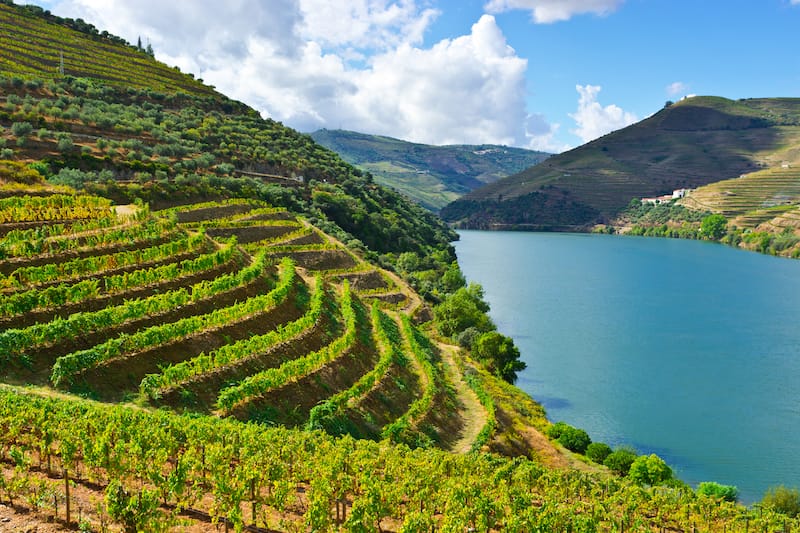
Douro Valley is situated three hours away from the city and is renowned for its fine, red, and white unfortified wines, reflecting the unique microclimates of the area.
The valley comprises three distinctive territories offering different styles of wines: Baixo(Lower) Corgo, Cima(Upper) Corgo, and Douro Superior.
11. Vila Real
Situated on the confluence of the Cabril and Corgo Rivers, this is an old inland city surrounded by mountains.
Vila Real is nestled on top of a headland and is home to stately houses, traditional wrought iron balconies, and Manueline windows.
The main landmarks are concentrated in and around Avenida Carvalho Araújo, including the Gothic Cathedral and a 16th-century mansion.
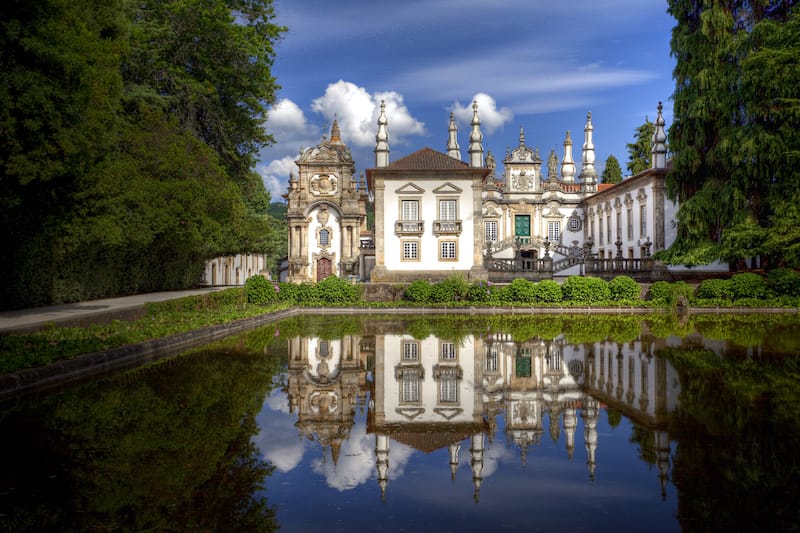
Take a walk between the waterfront avenue and Avenida Carvalho Araújo. Get to the liveliest part of the city and admire the genuinely Portuguese civic architecture.
See the Misericórdia Church and a masterpiece built by the Italian architect Nicolau Nasoni, the Clérigos Church.
12. Nazare
This half-moon-shaped beach area is the town’s seafront, famous for preserving colorful fishing traditions. Strolling along the shoreline, you can still encounter fishmongers wearing traditional seven skirts.
On the right, facing the sea, visitors can see an impressive headland, Sítio, offering popular views of the Portuguese coast.
The top of this 318-meter rock can be reached by a funicular, where the Ermida da Memória chapel is situated.
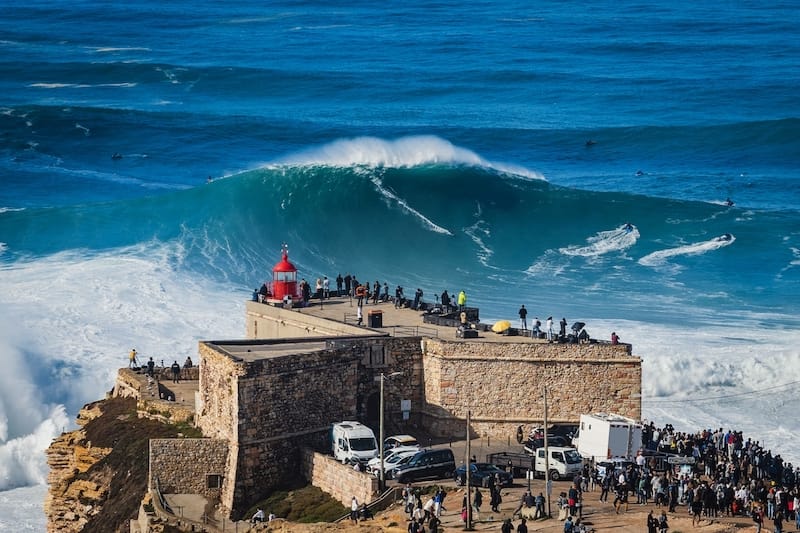
To explore the traditions of Nazare, you can stop at the Shrine to Our Lady of Nazaré as well as the Dr. Joaquim Manso Museum, situated nearby.
Nazaré Canyon is the largest underwater canyon in Europe, boasting giant waves and a perfect hub for surfing enthusiasts.
13. Braga
Braga is often called the City of the Archbishops or Portuguese Rome.
For centuries the temporal and spiritual power was held by the Archbishops, and the city is packed with numerous churches, shrines, and religious buildings.
The oldest landmark in the country, around which the city has grown, is the Cathedral of Braga. Featuring several architectural styles, the Cathedral has five chapels and two cloisters.
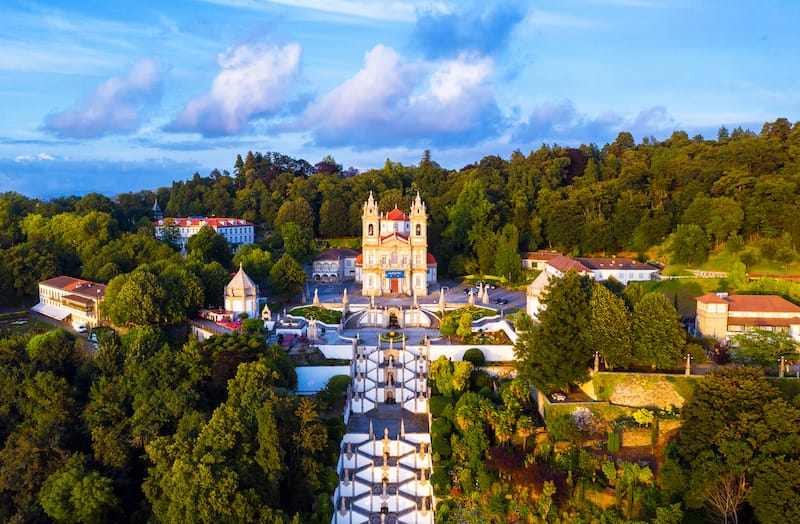
The most significant symbol of the city is the 16th-century Arch of the New Gate.
The most prominent place in the area is the Sanctuary of Bom Jesus, featuring Rococo, Baroque, and Neoclassical architecture.
Braga’s central point is the Arcada, consisting of 19 arches and built in 1715.
14. Sintra
Sintra is situated in Portugal’s central district, several kilometers away from the Atlantic Ocean.
The town is an exceptional combination of cultural and natural attractions and is one of the best day trips from Lisbon.
Sintra is a pioneer center of European Romanticism, boasting a diversity of buildings and monuments from a long period of history. Here are several must-visits.
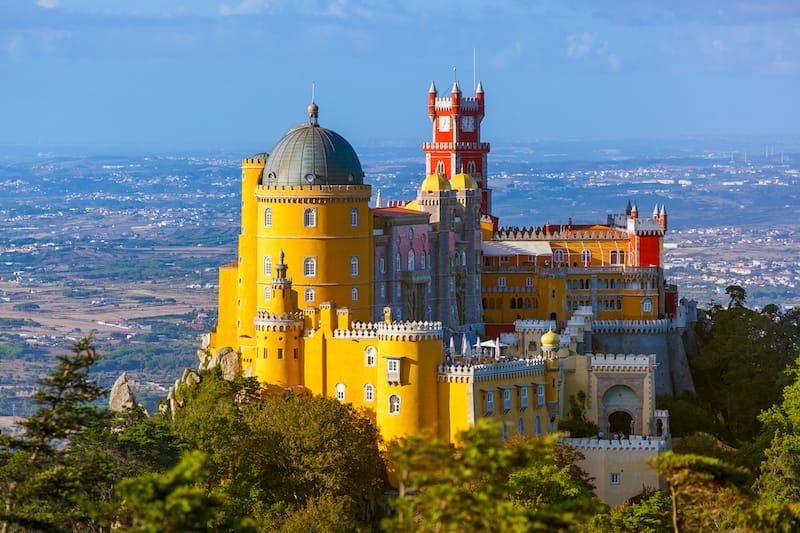
The Royal Palace, the architectural gem of the town, dates back to the 15th century. The Pena Palace settled on a peak in the Serra, is a pure work of Romanticism.
The Palace of Monserrate represents 19th-century eclecticism and is renowned for its gardens.
See also The Trinity Convent of the Arrabalde, The Church of Santa Maria, and the Parque de Pena.
15. Frecha da Mizarela Waterfall
Set near Mizarela (Rossas) in the region of Aveiro, this is one of the highest waterfalls on the mainland. To reach the location, take the exit to Saril from road N224.
Follow this road to Mizarela and find the sign Frecha da Mizarela just for Mizarela. Getting to the viewpoint, you can already relish amazing views.
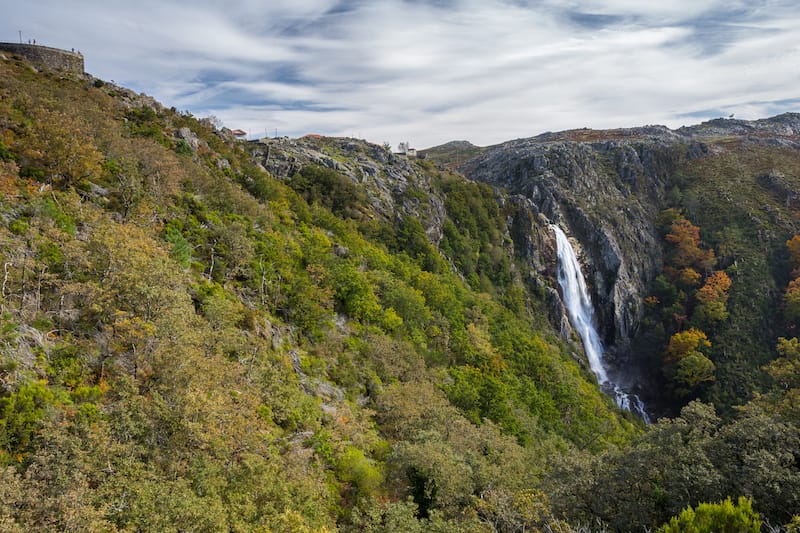
Visitors can also walk or drive down the dead-end road to discover other stunning views of the waterfall. You can join the trail parallel to the dead-end road for even better scenes.
In summer dry periods, the waterfall probably gets dry, while in rainy seasons, it transforms into a medium powerful waterfall with scenic vistas.
16. Aveiro
This small city, famous for its recent urban development and canals, is settled in the north of the country.
Aveiro has three canals, dividing it into two parts, which were once used to transfer salt and edible seaweed.
Take a walk through the center, see the Jardim do Rossio and the Forum Aveiro Shopping Center area. Discover the traditional bakeries and taste the local sweets.
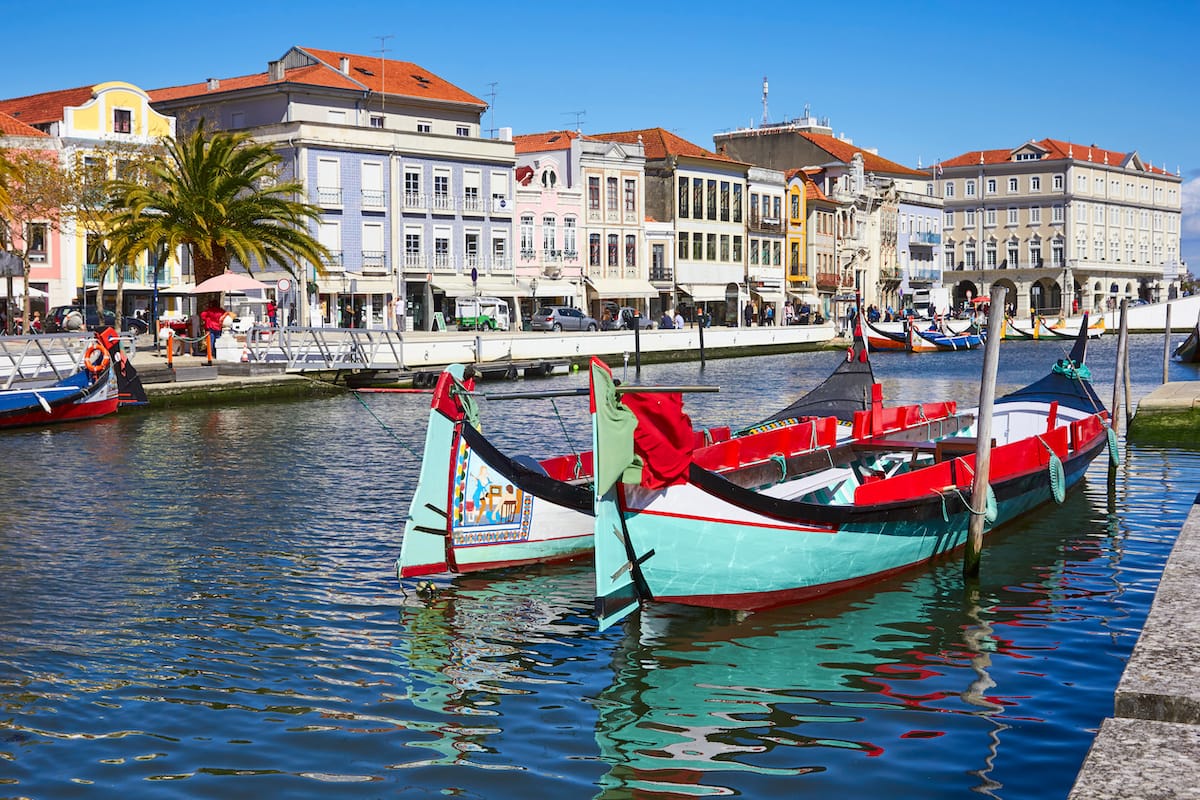
Rest on the benches relishing magnificent buildings. Continue your route and see the 15th-century Convento de Jesus, housing the Museum of Aveiro.
Other highlights to visit include the Catedral da Sé de Aveiro, the Museum of Vista Alegre, the Parque Infante D. Pedro, and the beaches of Costa Nova and Praia da Barra.
17. Faro
This is the capital city of Algarve, situated on its eastern part, an hour from the Spanish border. As an island beach and metropolitan city, Faro makes a perfect holiday destination.
Here are some of the things you can do throughout your trip. Explore the delightful old town of the city with narrow cobblestoned streets and pavements, plenty of cafes, and restaurants.
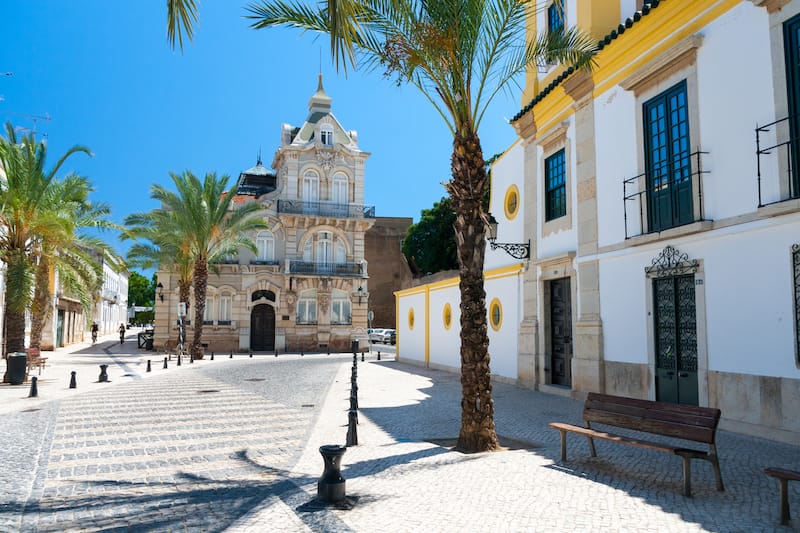
See the gothic Se Cathedral, the Nossa Senhora convent, and Paço Episcopal Palace.
Join one of the Ria Formosa boat tours and visit the Ria Formosa Natural Park, a series of mudflats and saltwater lagoons. Further attractions include the Capela dos Ossos and the Praia de Faro Beach.
18. Arrabida Natural Park
This protected area was established in 1976, covering 108 square kilometers. It’s located between the city of Setúbal and the town of Sesimbra, the sea, and the hill of Palmela.
You may join one of the hiking trails to explore the area. Serra do Risco is a moderate trail offering fantastic views of the sea and cliffs.
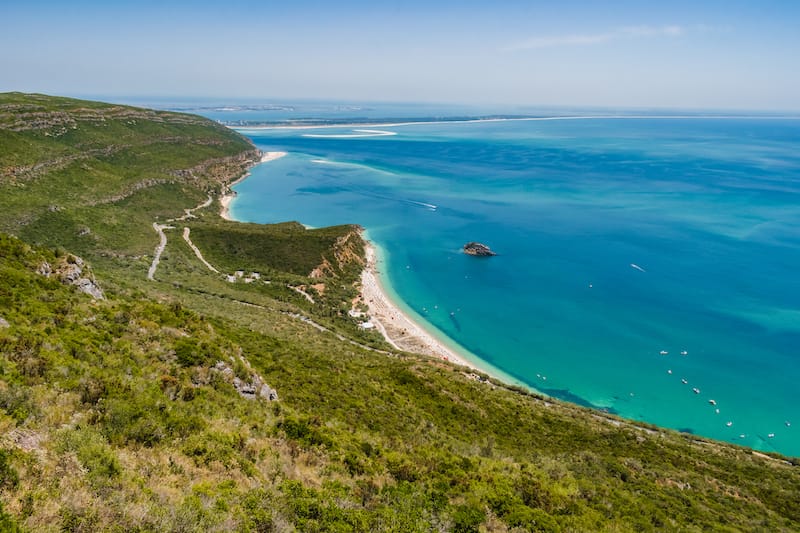
Parque Natural da Arrábida’s #1 trail is a difficult but beautiful one, not recommended for visiting with children. Another moderate route is Falésia da Serra do Risco, which offers scenic landscapes.
While hiking it’s important to wear appropriate clothing, long sleeves, and pants, because of the dense vegetation. And grab water with you!
19. Peniche
One of the top locations of Central Portugal, the colorful city of Peniche is an inviting destination for families and solo travelers.
Embraced by the Atlantic, this fishing city is an acclaimed surf spot. In the remote past, the venue used to be an island, but due to the sea tides and the wind, it has become a peninsula.
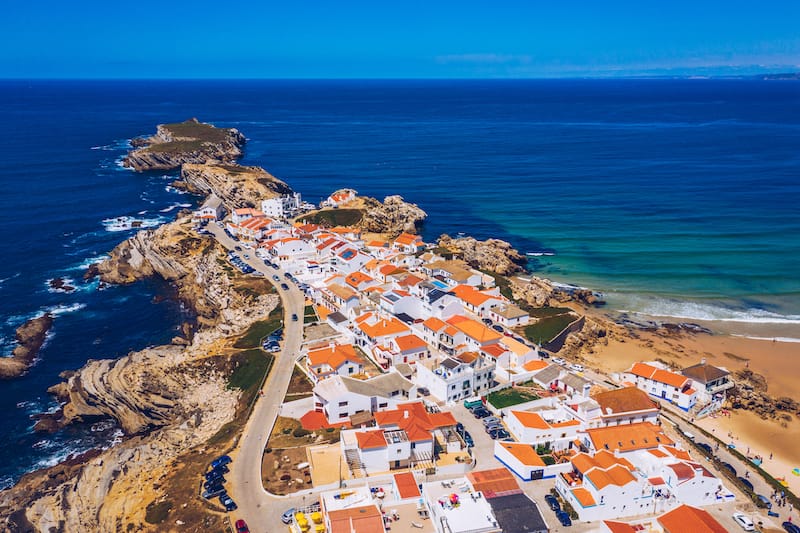
Its richness of the land and strategic location always attracted civilizations, and the area has been occupied since Prehistoric times.
The city offers many eye-catching beaches placed in captivating natural settings.
One of the city’s symbols is the Fortress of Peniche, housing the National Museum of Resistance and Freedom.
20. Amarante
According to many historians, this transitional city, connecting the provinces of Minho and Trás-os-Montes, was established by a Roman centurion, Amarantus.
Two imposing features of the area impress its visitors: the great Serra do Marão rising above the city and the river Tâmega, flowing through the heart of Amarante and adding more colors to the lovely houses on its banks.
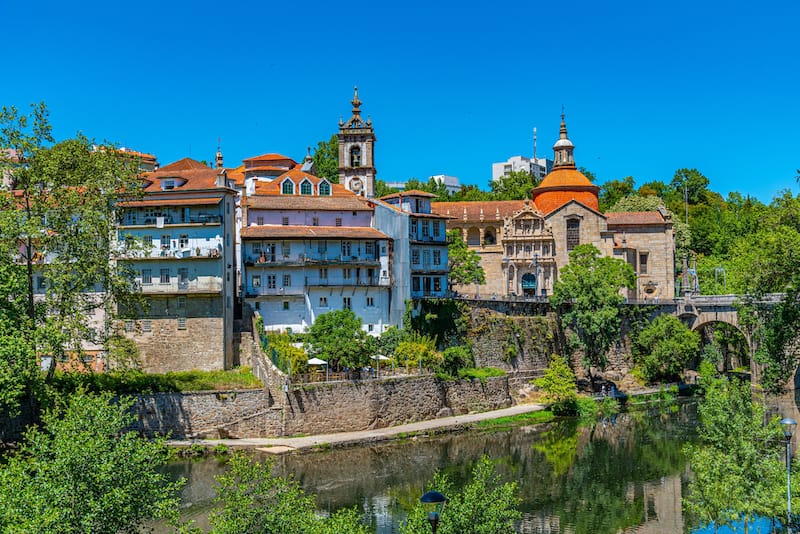
The city’s bridge symbolizes the heroic resistance of the local population against Napoleon’s troops in the 19th century. Amarante is extremely popular for its cakes and sweets.
Easy to find in many of the local cafes and cake-shops, taste their papos de anjo, toucinho do céu, brisas do Tâmega, and galhofas.
21. Coimbra
This animated city rises scenically from the Rio Mondego. It boasts a rich historical background being the medieval capital of the country for more than a century.
Coimbra is home to the oldest and most prestigious university in Portugal. The interplay of ancient history and modern student ideals join together to form a great tourist destination.
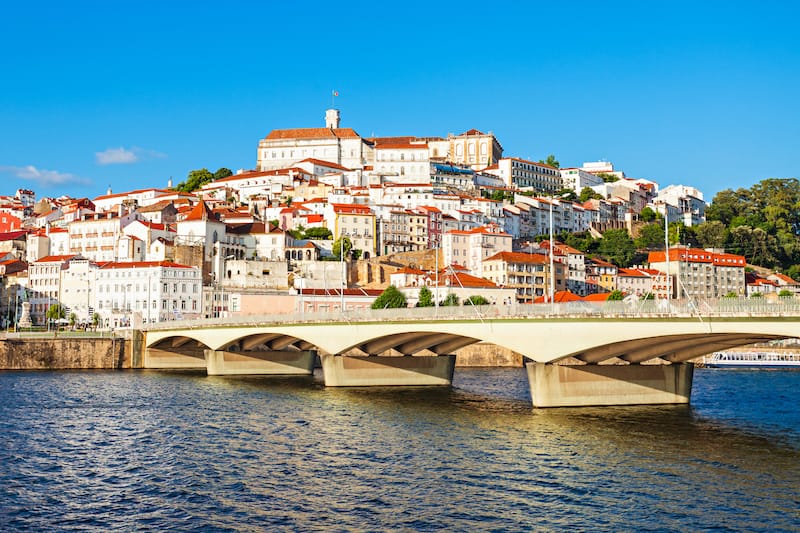
The city’s atmospheric historic center dates back to the Moorish times, featuring a monumental cathedral and dark cobbled streets.
In summer evenings, visitors can enjoy metallic notes of the guitarra, Portuguese guitar, and the voices of fado singers echoing in the city’s old stone walls.
22. Portimao
Situated on the southwestern tip of Europe, Portimao is a bridge between the Mediterranean and the Atlantic.
This is a place that holds its maritime and rural traditions in high esteem. With a rich natural setting and fantastic climate, the city boasts stunning beaches.
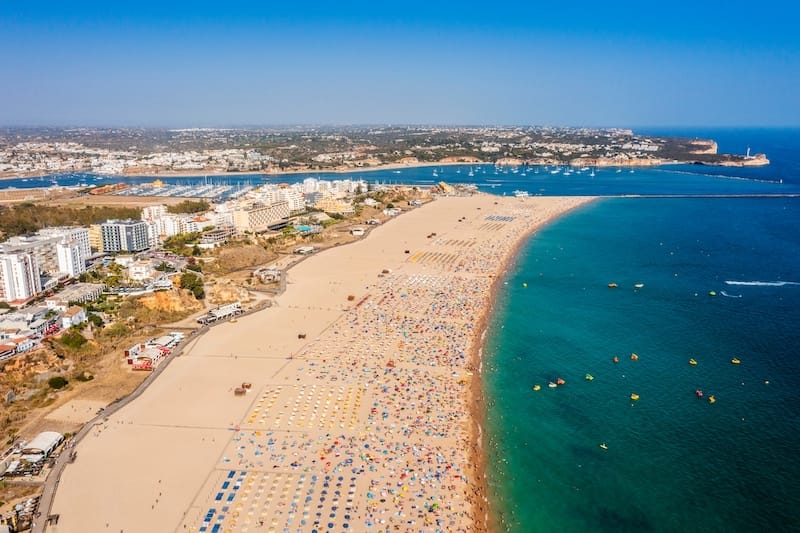
Fine golden sands in harmony with the pristine water of the sea and deep blue sky create an idyllic place to enjoy a holiday.
Explore the streets of the city and discover the sites of cultural and historical heritage, including Sárrea Garfias Stately Home, Millstone Square, Portimao Museum, Bivar Manor House, Main Church of Portimao, Fort of Saint Catherine, and Chapel of Saint Joseph.
23. Serra da Estrela Natural Park
This is the first natural park and the largest protected area in Portugal. Covering more than 101 thousand hectares, it spreads over six municipalities.
In the park, you’ll find continental Portugal’s highest spot, the country’s only ski course, the spring of two significant rivers, and an alpine-looking landscape.
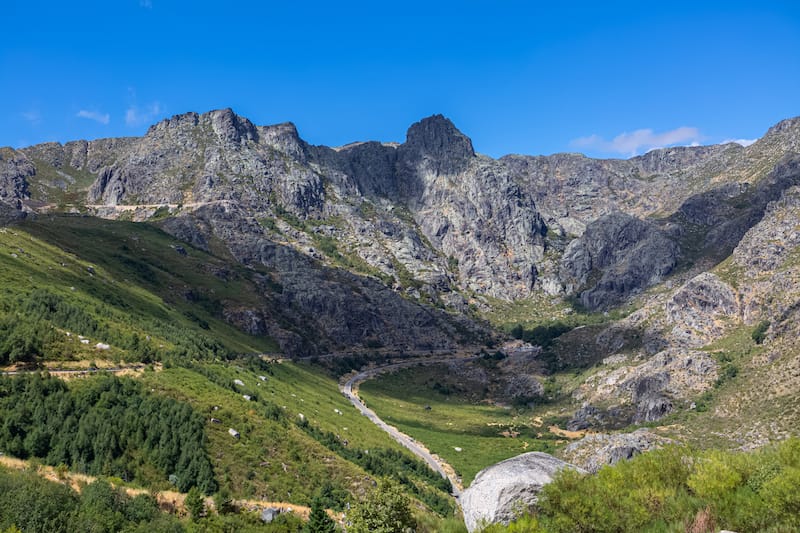
The best way to explore the natural landscapes of the area is to join one of its challenging walking circuits.
Take a route across the highly settled lagoons, Lagoa Comprida, Lagoa Escura, and Lagoa dos Conchos, or walk a trail starting in Manteigas and discover the greatest glacial valley of the country, Zêzere.
Discover the area’s breathtaking views on a circular trail, Planalto da Torre.
24. Ericeira
This traditional fishing village, located 40 km northwest of the bustling capital, boasts a history dating back to the 12th century.
The old village is a great place to visit with its narrow cobblestoned streets, delicious cuisine, local culture, surf opportunities, and bold Atlantic views.
Many great restaurants and cozy cafes offer fresh seafood and traditional Portuguese delicacies.
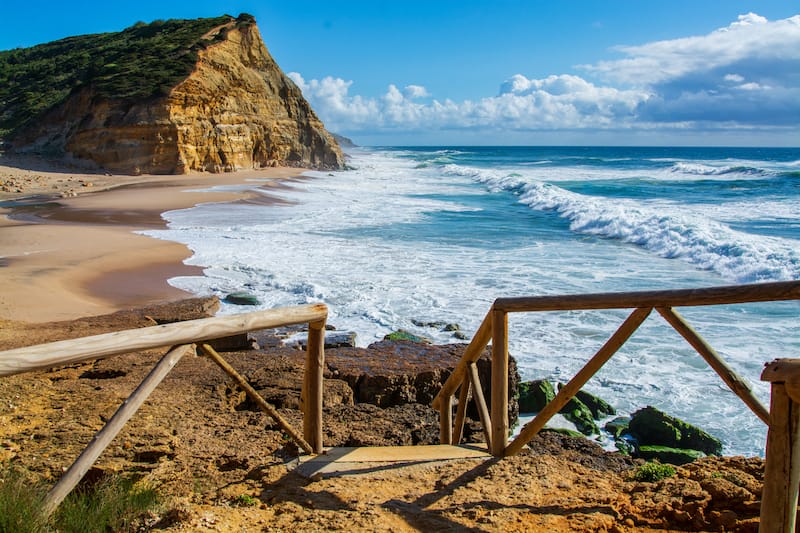
For shopping lovers, the city has local handicrafts, fashion shops, and shops from international surf brands.
Ericeira boasts countless sports options for active holiday-goers. Famous as the first World Surfing Reserve in Europe, the area also provides other water sports like stand-up paddle boarding or fishing.
On land, go hiking, mountain biking, or horseback riding.
25. Obidos
Obidos is a perfect example of a Medieval Portuguese fortress surrounded by walls and dominated by the Moorish Castle.
The town is accessed through the southern Santa Maria gate, adorned with 18th-century azulejo decoration.
Inside the walls, the visitors can relish the medieval atmosphere of old whitewashed houses and winding streets.
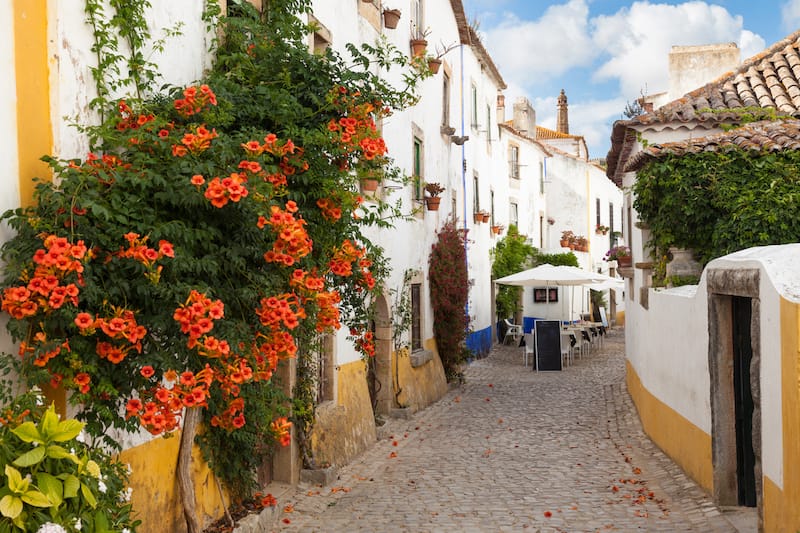
Be sure to see the Igreja Matriz de Santa Maria, the Igreja do Senhor da Pedra, and the pretty Capela de São Martinho.
Several colossal events take place in Obidos every year, including FOLIO – Óbidos International Literary Festival, the International Chocolate Festival, and Óbidos Christmas Town.
In addition, the town boasts one of the best golf courses in Europe.
26. Alentejo
Alentejo is situated in southern Portugal, between the Algarve and the Tagus River. In the east, it borders Spain and is washed by the Atlantic Ocean waters in the west.
This extensive rural region boasts stunning landscapes and rich archeological, architectural, and monumental heritage.
In addition, local cuisine and wines provide unforgettable experiences for visitors.
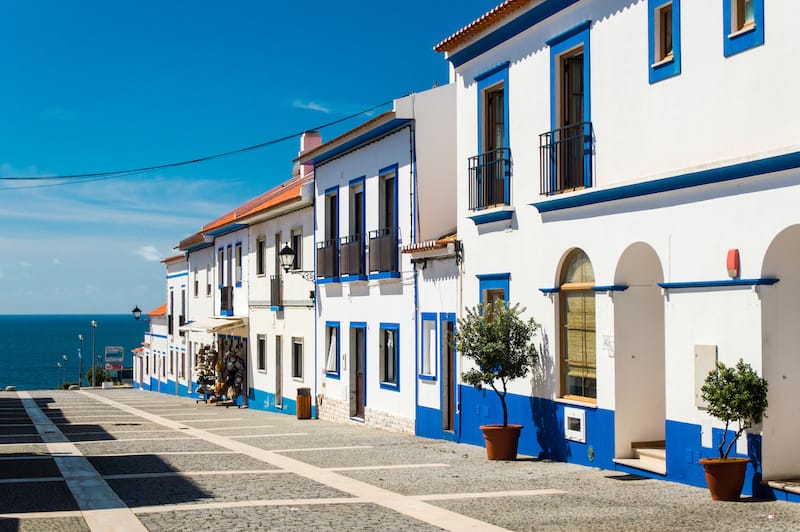
Alentejo offers a wide range of leisure and entertainment services, from water activities, nature outings to museums and monuments.
Various recreational opportunities, like surfing, windsurfing, kayaking, diving, mountain biking, ballooning, and local product tasting, are available.
The top sites to visit include Castelo de Alandroal, Museu Municipal Pedro Nunes, Paço dos Henriques, and Museu Etnográfico da Messejana.
27. Paiva Walkways
Located in the municipality of Arouca, visitors can find the Paiva Walkways set on the left bank of the Paiva River.
This 8 km route nestles in an authentic natural sanctuary along the waters downhill and quartz crystals. The path allows access to three river beaches of Espiunca, Areinho, and Vau.
This is a real adventure for nature enthusiasts, a journey through geology, biology, and archeology. The walkway towards Areinho-Espiunca is the least challenging.
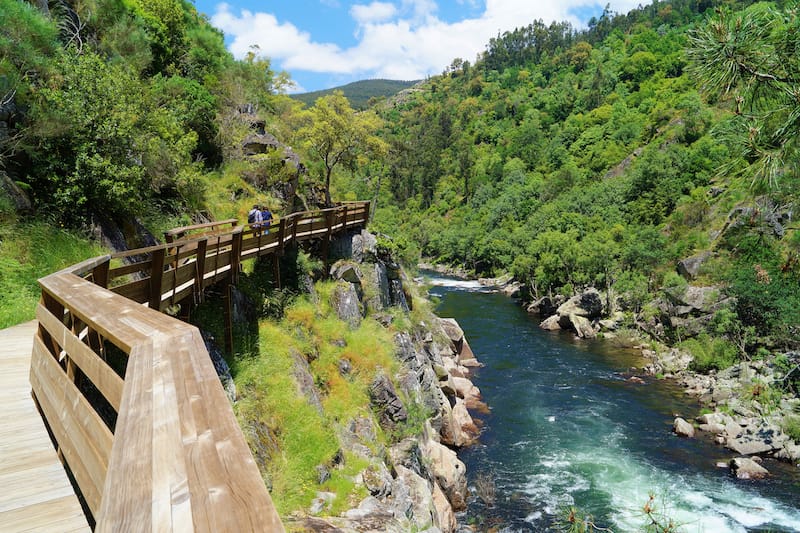
If you’re doing a round trip, start from Espiunca. It’s essential to wear appropriate shoes and always carry water. Along the route, visitors can rest in many shaded areas.
At the end of the walkways, cafes are located offering quick meals.
28. Monsanto
Monsanto is one of the 12 official historical villages of the country. Over the centuries, the village has played a strategic role in protecting Portugal from various invaders.
The most astonishing feature of the area is that the entire village has been constructed around granite boulders of various sizes.
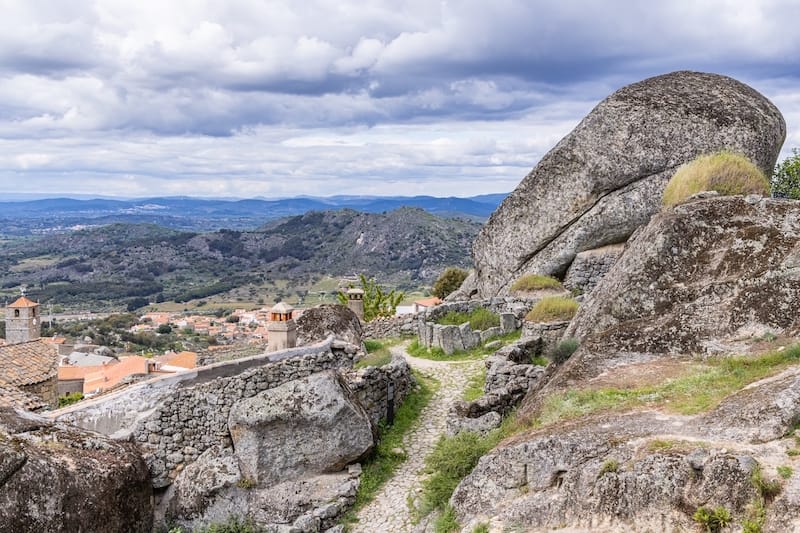
Visitors can see two gigantic boulders just on the road leading to Monsanto as well as on the walls, floors, and even on the roofs of the medieval stone cottages.
A must-see in the village is Monsanto Castle, with arched doorways and carved arrow holes.
Below the castle fortification is the Romanesque Chapel, Capela de São Miguel, surrounded by stone coffins and unique rock formations.
29. Praia de Moledo
Set in an urban area surrounded by mountains, the beach is in first place among the North region’s 29 beaches.
With pristine waters and white sands, the beach is an idyllic place for a holiday. The area is suitable for everyone, lonely travelers, families, and relaxation getaway enthusiasts.
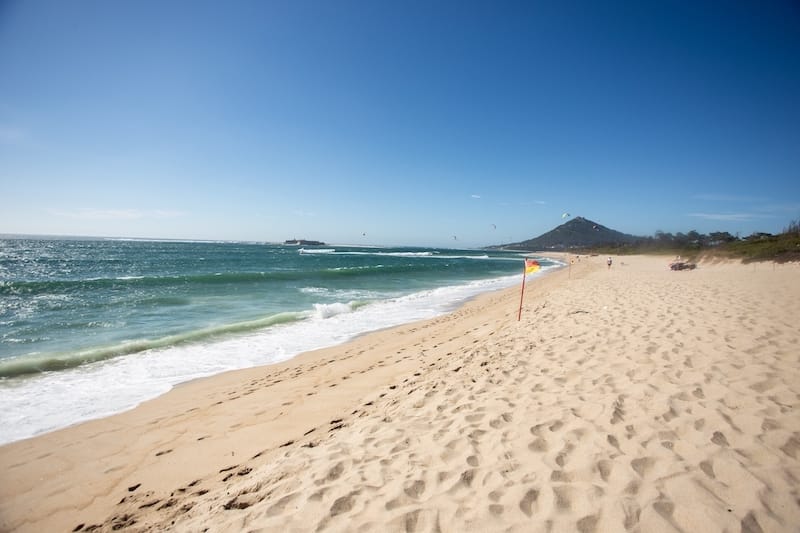
During the high season, the beach is partially crowded. Praia de Moledo is free to all, featuring amenities like showers, changing rooms, toilets, and a beach restaurant.
In addition to sunbathing and swimming, visitors are offered a wide range of activities, making it the perfect weekend break in the country!
The coast is particularly famous for kiteboarding and windsurfing. The coastline is supervised by a lifeguard during the season.
30. Guimaraes
Guimaraes is considered the cradle of Portuguese nationality. This historical town symbolizes the establishment of the Portuguese national identity in the 12th century.
The well-preserved Guimaraes showcases the evolution of a medieval settlement into a modern town.
The area’s buildings and structures depict the development of Portuguese architecture from the 15th to the 19th century.
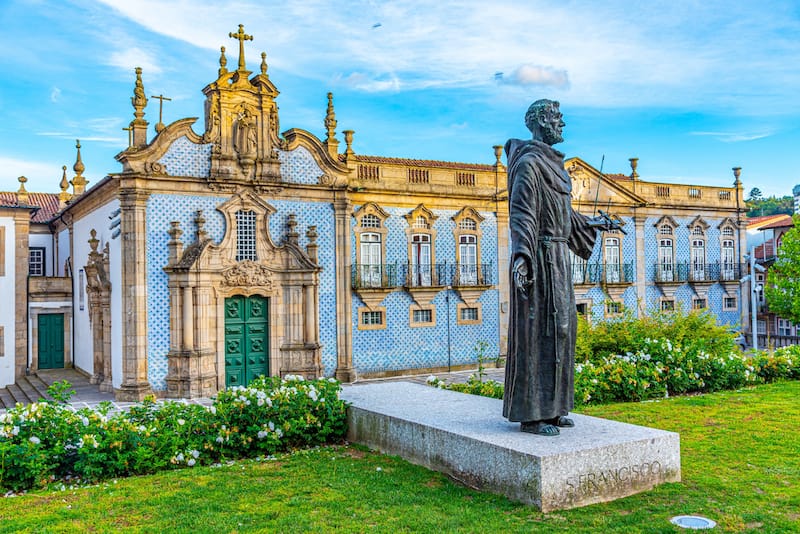
The Historic Centre of Guimarães is famous for its authentic building stock, including two anchors around which the city initially developed, the monastic complex in the south and the castle in the north.
Visitors can also see well-preserved noble houses, civic facilities, and city squares dating from 1498 to 1693.
Did we miss any of the prettiest places to visit in Portugal? Let us know your thoughts in the comments!
More Portugal Travel Guides
- Things to do in Porto
- Weekend in Porto
- One day in Porto
- Lisbon day trips
- Weekend in Lisbon
- Lisbon in winter
- Azores travel tips
- Azores itinerary
- Things to do in Madeira
- Madeira itinerary
- Weekend breaks in Portugal
Pin this Places in Portugal Guide

Megan is a travel blogger and writer with a background in digital marketing. Originally from Richmond, VA, she now splits her time between Frankfurt, Germany and Arctic Finland after also living in Norway, Armenia, and Kazakhstan. She has a passion for winter travel, as well as the Nordic countries, but you can also find her eating her way through Italy, perusing perfume stores in Paris, or taking road trips through the USA. Megan has written for or been featured by National Geographic, Forbes, Lonely Planet, the New York Times, and more. She co-authored Fodor’s Travel ‘Essential Norway’ and has visited 45 US states and 100+ countries.

